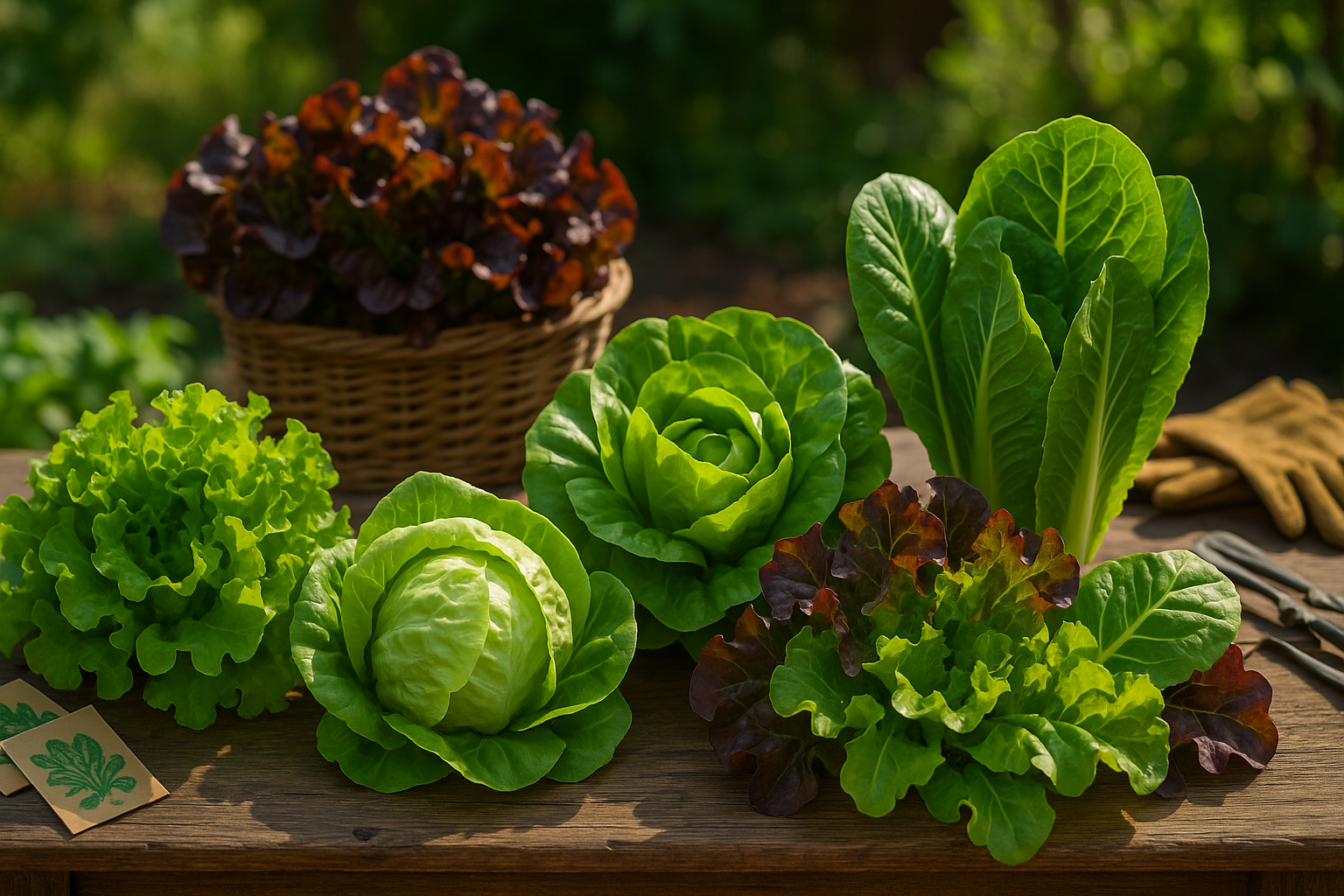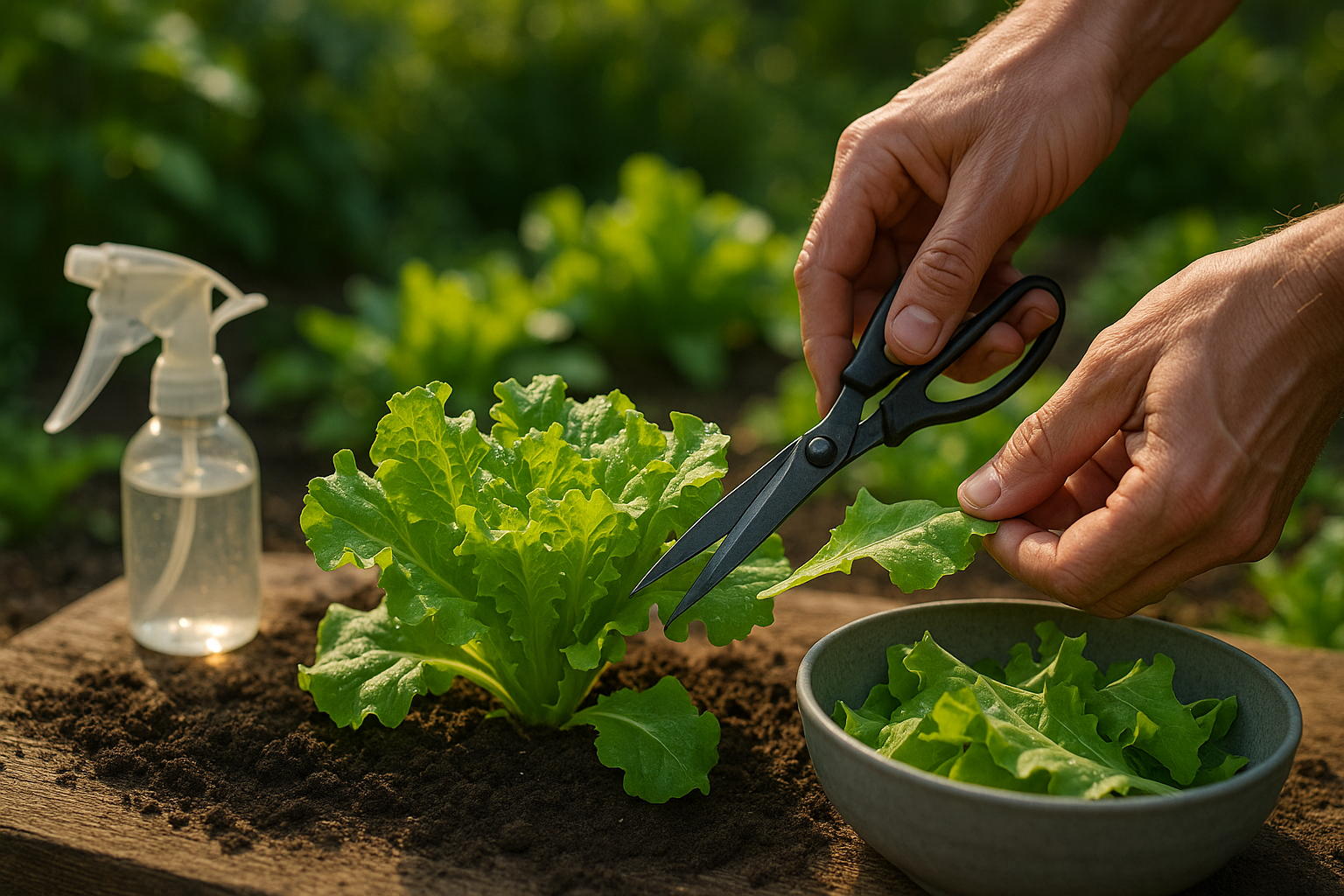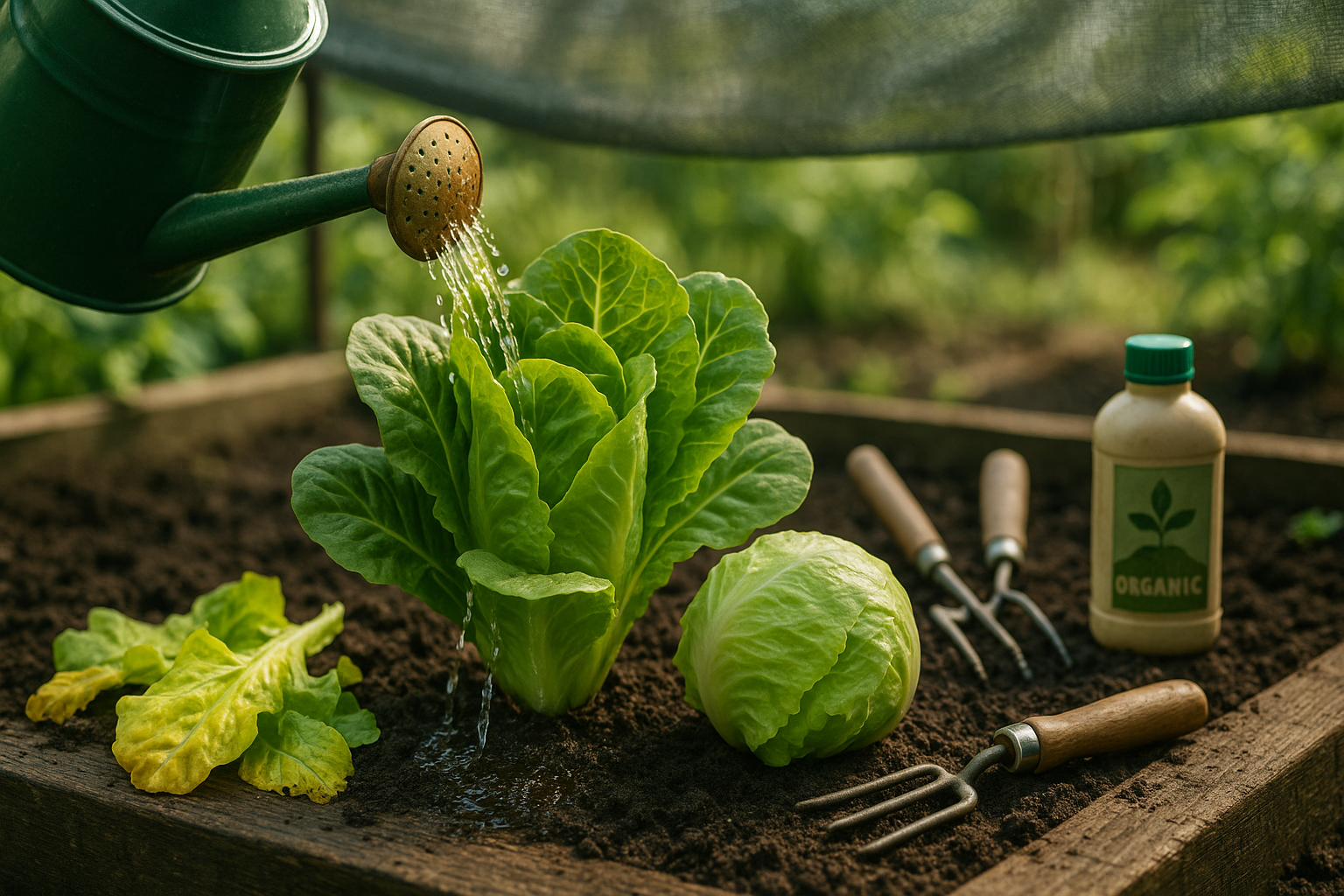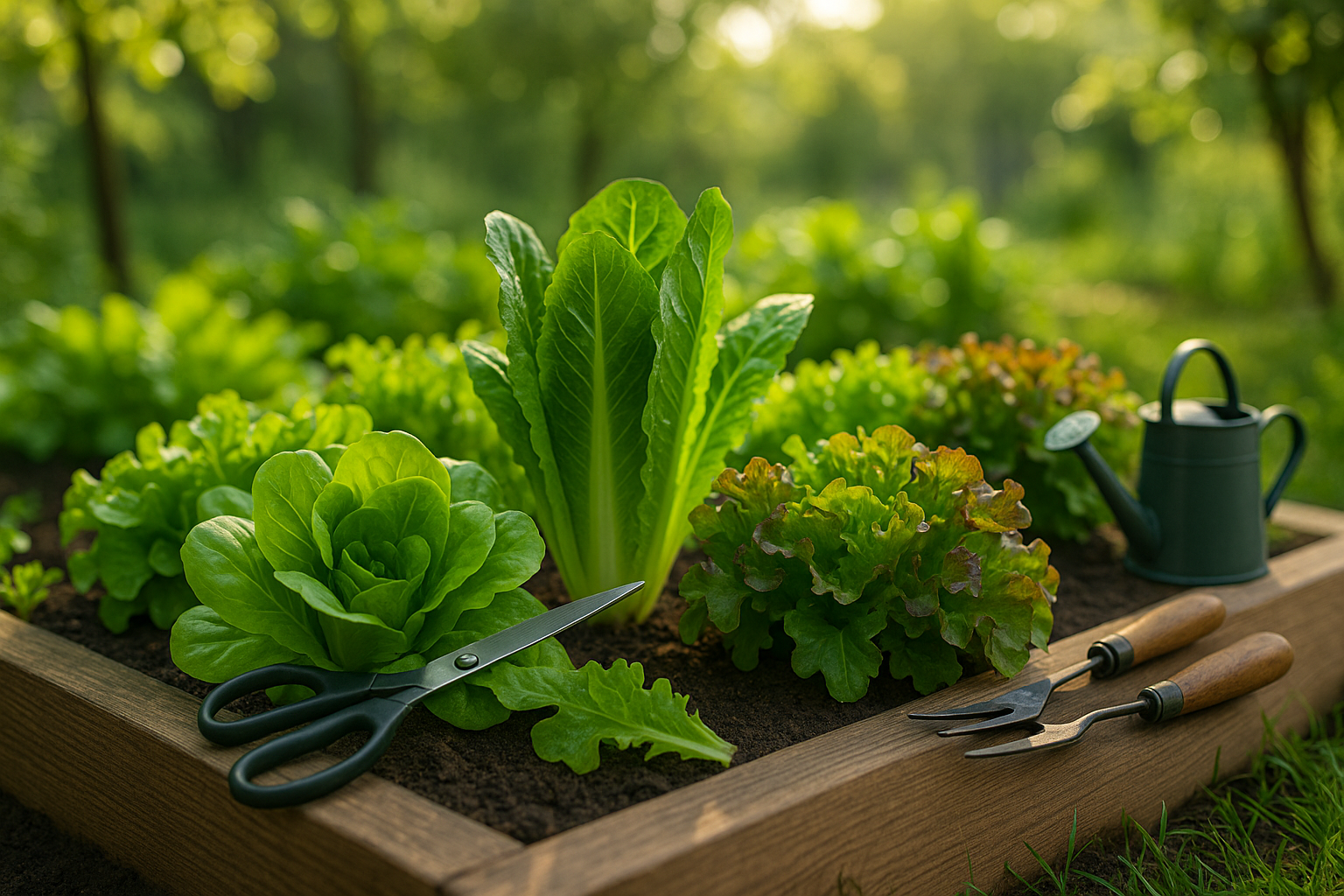Introduction to the “Cut and Come Again” Method
If you’re looking to get the most out of your salad garden this season, learning how to grow cut and come again lettuce can be a game changer. Unlike traditional lettuce harvesting—where you pull the whole plant out of the soil when the heads mature—the “cut and come again” method lets you harvest just the outer leaves while leaving the main plant intact.
This simple twist means your lettuce keeps producing fresh leaves for weeks, or even months, offering a steady supply of greens for your kitchen. For home gardeners, the advantages are huge. Not only does this approach significantly maximize your harvest, but it’s also beginner-friendly and requires less garden space since you can get multiple cuttings from the same row.
Plus, cutting leaves instead of pulling up the plant helps maintain soil structure and reduces the need for constant replanting. This method works so well with leafy crops like lettuce because they naturally regrow from their center after outer leaves are trimmed.
So whether you’re working with a raised bed, a balcony container, or a backyard plot, using the cut and come again lettuce strategy allows you to enjoy crisp, tasty greens far longer than single-harvest techniques allow.
If you’re just starting with lettuce, be sure to check out our complete lettuce growing guide for beginner tips on soil, watering, and harvesting techniques.
Choosing the Right Lettuce Varieties

When planning a cut-and-come-again lettuce garden, selecting the right varieties is key to success and maximum yields. Loose-leaf lettuces like Black Seeded Simpson, Salad Bowl, or Red Sails are perfect for this method, as they naturally produce numerous tender leaves that can be harvested multiple times throughout the growing season.
Butterhead lettuces, such as Buttercrunch and Bibb, also work well, offering mild, sweet leaves that regrow after cutting. These types bounce back quickly when you trim just the outer leaves, while the center continues to produce new growth.
In contrast, head lettuces like iceberg or romaine are less suited to repeated harvesting. These varieties tend to form a single, dense head all at once, and cutting leaves early can disrupt head formation and reduce overall quality.
When selecting seeds or seedlings, look for varieties labeled as baby leaf, cut and come again, or leaf lettuce. If you’re gardening in a hot climate, seek out heat-tolerant strains like Oakleaf or Summer Bibb. For cooler environments, try Winter Density or Arctic King, which are bred for cold resilience.
Always check seed packets for days to maturity and disease resistance to help stagger your plantings. This way, you can ensure fresh, vibrant greens are ready to harvest week after week, regardless of seasonal swings or climate challenges.
When and How to Harvest Lettuce for Regrowth

Harvesting lettuce for regrowth is all about timing and gentle technique. For most leafy varieties, such as romaine or loose-leaf, the ideal moment for your first cut is when the leaves reach about 4-6 inches tall—usually about 30-45 days after planting, though this varies by variety and weather. When your lettuce looks lush and vibrant but before it begins to bolt (send up a flower stalk), it’s ready for harvest.
Use sharp, clean scissors or garden shears to snip the outer leaves about an inch above the soil, leaving the small, innermost leaves and the central crown untouched. This ensures the plant can photosynthesize and continue growing strong for future pickings. Try not to remove more than a third of the plant at a time; taking too much can shock the roots and slow regrowth.
Always cut in the morning when leaves are crisp and cool for the best texture and to minimize stress on the plant. Be mindful not to nick or cut into the crown—this is the growing point and if damaged, the plant may not recover. After harvesting, water your lettuce well to help it bounce back. If you notice any yellowed or damaged leaves, remove those so the plant can focus energy on new, healthy foliage.
With careful cutting and regular harvesting, you can enjoy crisp, homegrown lettuce every week throughout the growing season. This method is tried and true for both backyard beds and container gardens, letting you maximize your crop with minimal effort.
Caring for Lettuce After Harvest

Once you’ve harvested lettuce, supporting the plant through the regrowth process is essential for continuous yields. Start by gently watering the base of the plant, keeping the soil evenly moist without over-saturating—lettuce roots are prone to rot if left in standing water.
After harvesting, a light dose of balanced, diluted fertilizer can help replenish nutrients lost during cutting; a slow-release organic blend or a liquid fish emulsion works well. Remove any leftover debris, such as cut stems, yellowing leaves, or weeds, to reduce the risk of pests and diseases.
Keep an eye on your lettuce patch for signs of plant stress, such as wilting, yellowing, or brown spots. These symptoms can signal disease (like downy mildew or leaf rot) or indicate watering issues. If you spot trouble, trim away damaged parts promptly and treat with neem oil or another organic fungicide as needed.
To encourage faster regrowth, avoid cutting the entire plant too low; leave about an inch or two of the stem above soil level to allow new leaves to sprout. If a hot spell or strong sun is in the forecast, offer temporary shade with a row cover or garden fabric—this prevents stress and bolting, keeping your lettuce tender.
With consistent attention and a little TLC, you’ll keep your lettuce thriving and enjoy multiple harvests from the same plants throughout the season.
How Many Times Can You Harvest, and When to Stop
When growing lettuce, most varieties can be harvested several times from a single planting, especially if you use a “cut-and-come-again” technique—snipping outer leaves and leaving the core to regrow. Typically, you can expect two to three good harvests before the plants start to lose vigor.
Watch for signs like smaller, tougher, or bitter-tasting leaves, as these indicate the lettuce is approaching the end of its productive life. Another clear signal is bolting: when your lettuce sends up a tall flower stalk, the leaves quickly become less palatable and the plant’s energy shifts to seed production.
To keep lettuce on your table all season, try succession planting—sow a handful of seeds every 10 to 14 days instead of all at once. This practice ensures you’ll always have fresh, tender leaves to harvest as older plants are spent.
If you notice bolting or declining leaf quality, pull those plants, refresh the soil, and reseed.
In home gardens, a little planning and observation go a long way. Mark your planting dates and rotate small patches. By staggering your sowing and replacing plants as needed, you can enjoy a steady supply of crisp lettuce throughout the growing season.
Troubleshooting and Bonus Tips for Success
No matter how carefully you tend your greens, a few common issues can still pop up. If you notice slow regrowth after harvesting, double-check that your plants are getting enough light and aren’t overcrowded—greens need six to eight hours of sunlight or a strong grow light indoors.
Bitterness in leaves is often caused by heat or letting greens get too mature. Try harvesting leaves young and growing cool-weather crops like lettuce and spinach in partial shade during summer.
Pests such as aphids and slugs can be another headache. Inspect leaves regularly, rinse aphids away with a strong water spray, and sprinkle crushed eggshells or diatomaceous earth to deter slugs.
Bonus Tips for Success
- Succession plant every two to three weeks for a steady harvest.
- Mix in organic compost to keep soil nutrients fresh.
- Pinch off outer leaves instead of pulling whole plants to encourage more growth and maximize yield.
- Water in the morning for extra flavor.
- Consider adding a diluted seaweed solution or fish emulsion as a monthly foliar feed.
With a little attention and these small tweaks, you’ll enjoy bigger, tastier harvests all season long.
